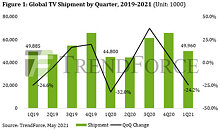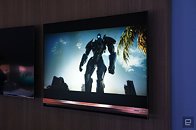Hisense Presents M2 Pro, Its Smallest, Lightest, and Most Portable 4K Laser Mini Projector Ever
Hisense, a leading consumer electronics and home appliance brand, introduces the M2 Pro laser mini projector, the latest addition to its Laser TV lineup. This powerful device redefines compact projection, delivering an immersive 4K cinematic experience anywhere, powered by innovative technologies never before available in such a compact form factor.
The Hisense M2 Pro laser mini projector represents a paradigm shift in portable home theater systems. By successfully miniaturizing and perfecting advanced laser and AI technologies, Hisense has developed its smallest, lightest, and most portable laser projector yet. Powerful, versatile, and extremely user-friendly, it delivers a premium big-screen experience wherever you are.
The Hisense M2 Pro laser mini projector represents a paradigm shift in portable home theater systems. By successfully miniaturizing and perfecting advanced laser and AI technologies, Hisense has developed its smallest, lightest, and most portable laser projector yet. Powerful, versatile, and extremely user-friendly, it delivers a premium big-screen experience wherever you are.

















